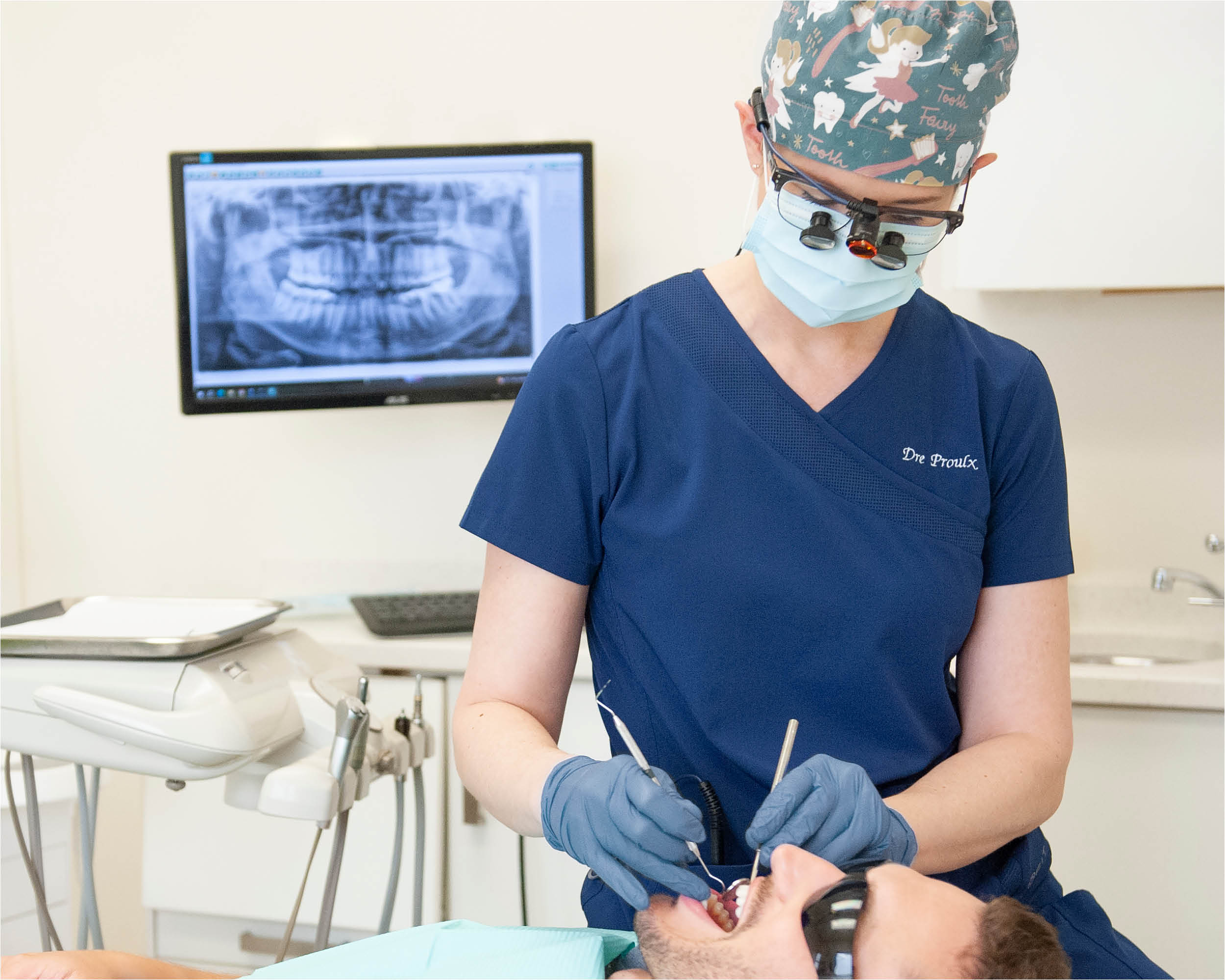Emergency
If you have an oral problem that requires an emergency intervention from a dentist, the Chez Soie Dentisterie team is available to answer your questions and help you get back to your normal life quickly.
If you have an oral problem that requires an emergency intervention from a dentist, the Chez Soie Dentisterie team is available to answer your questions and help you get back to your normal life quickly.
We will try to give you an appointment as quickly as possible. In the meantime, here are some tips that might help you. These do not represent a diagnosis and will not replace a visit with an oral health professional.
A fractured tooth is a relatively common dental emergency. Avoid chewing on this tooth and avoid foods that are too cold or too hot. It is usually not necessary to recover the broken piece. Your dentist will be able to repair the tooth with a filling or crown in most cases.
It is quite common to lose a filling. This can happen quite suddenly. Avoid chewing on this tooth and avoid foods that are too cold or too hot. It is usually not necessary to recover the broken piece. Your dentist will be able to repair the tooth with a filling or crown in most cases.
Pain when chewing is usually linked to a dental fracture. This pain may also be associated with an occlusion problem with this tooth or be caused by recent treatment done at the dentist. It is suggested that you do not chew on this tooth and see your dentist for an immediate assessment.
It is very common to have tooth sensitivity upon exposure to cold. The first line of defense is often the application of a sensitivity-treating toothpaste. It may be suggested to apply the toothpaste directly to the tooth in question and let the product act, avoiding rinsing the mouth. If this does not work, there are several other interventions that our team can take to help the sensitivity.
If you have lost a crown or veneer, it is recommended that you keep it with you and bring it to your dentist visit. Most of the time, the dentist will be able to cement it back. In some cases, where the tooth is fractured or decay has spread, the dentist will need to redo the crown or last resort will need to extract the tooth. While waiting for your visit, if you experience pain, you can try to put the crown back in place. You can help the temporary placement of this by adding a little toothpaste or a small piece of sugar-free chewing gum inside the crown.
Bleeding gums are often caused by gingivitis, inflammation of the gums. Most of the time, it can be improved by proper dental hygiene and prioritizing good cleanings. In some cases, bleeding may indicate a more serious problem like an infection or abscess. It is therefore important to consult a dentist.
Swelling may be a sign of infection or abscess. See a dentist for an evaluation to confirm an accurate diagnosis. While waiting for your visit, you can apply a cold compress to the face and take anti-inflammatories such as ibuprofen (if your health allows it without any contraindications) .
